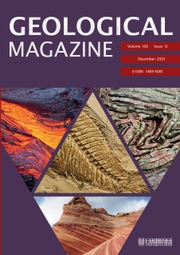No CrossRef data available.
Article contents
I.—The Genesis of Tungsten Ores
Published online by Cambridge University Press: 01 May 2009
Extract
The exploitation of tungsten ores on a large scale is of comparatively recent development. Till lately the industrial applications of this metal and its compounds were very limited, and they were regarded rather in the light of chemical and mineralogical curiosities. In fact, the tungsten minerals were considered a nuisance by miners, owing to the difficulty of separating them from other valuable and equally heavy ores occurring in close association with them. Sodium tungstate was manufactured to a certain extent and used as a mordant in dyeing and for rendering textile fabrics fireproof, and tungstic oxide was sometimes employed in the making of yellow glass. About the year 1905 a demand arose for the metal for electric lamp filaments, but at the present time by far the most important application is in the metallurgy of steel. The addition of a small quantity of tungsten, not more than 7 or 8 per cent, together with about 5 per cent of chromium, has a remarkable effect on steel, rendering it both hard and tough and suitable for high-speed cutting tools. Since the beginning of the War the demand for the ores for this purpose has enormously increased, as also has the price; new sources are being sought for and opened up in many localities; in Colorado and California there was a few months ago a tungsten boom recalling the gold rushes of the early days.
- Type
- Original Articles
- Information
- Copyright
- Copyright © Cambridge University Press 1918
References
page 194 note 1 Finlayson, , “The Ore-bearing Pegmatites of Carrock Fell”: Geol. Mag., 1910, p. 19.Google Scholar
page 194 note 2 “The Occurrence and Utilization of Tungsten Ores.”: Bull. Imp. Inst., vol. vii, pp. 170, 285, 1909.Google Scholar
page 195 note 1 “Colorado Ferberite and the Wolframite Series”: Bull. 583, U.S. Geol. Surv., 1914, p. 37.Google Scholar
page 195 note 2 Special Reports on the Mineral Resources of Great Britain, vol. i: Tungsten and Manganese Ores (Mem. Geol. Surv.), 1915.
page 196 note 1 The Geology of the Land's End District (Mem. Geol. Surv.), 1907, p. 53.Google Scholar
page 197 note 1 Granell, , Boll. Soc. Esp. Hist. Nat., vol. ix, p. 81, 1909Google Scholar, and Zeits. für Kryst., vol. 1, p. 472, 1911.Google Scholar
page 198 note 1 Hess, , Bull. 380, U.S. Geol. Surv., 1909, p. 149.Google Scholar
page 198 note 2 Ussing, , Danmark Geol. Untersög., ser. ii, No. 12, p. 97Google Scholar; Baldauf, , Zeits. für prakt. Geol., vol. xviii, p. 432, 1910.Google Scholar
page 198 note 3 Bleeck, , Rec. Geol. Surv. India, vol. xliii, p. 48, 1913.Google Scholar
page 199 note 1 Paper on Tungsten Ores, read before the F.M.S. Chamber of Mines at Ipoh, March 25, 1916 (no place of publication or date).
page 199 note 2 “The Geology of the Seward Peninsula Tin Deposits,” by Knopf, A., Bull. 358, U.S. Geol. Surv., 1908.Google Scholar


